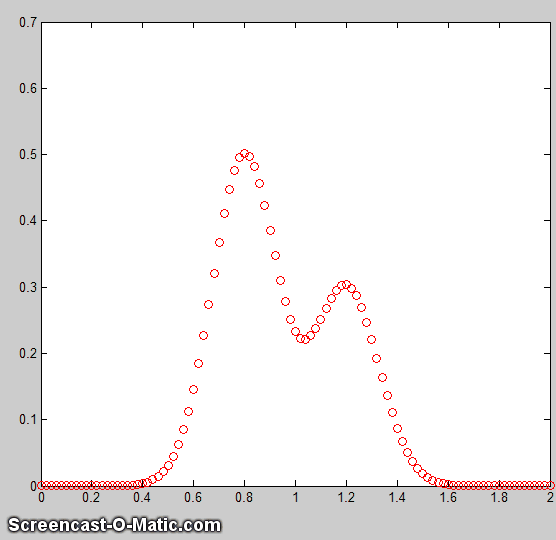
The lower panel shows the residuals (difference between the data and the model). The dotted magenta lines are the first-guess peak positions for the last fit. The screen display is shown on the right the upper panel shows the data as blue dots, the combined model as a red line (ideally overlapping the blue dots), and the model components as green lines. All the input and output arguments are explained below. Only the first input argument, the data matrix, is absolutely required there are default values for all other inputs. The syntax is =peakfit(signal, center, window, NumPeaks, peakshape, extra, NumTrials, start, AUTOZERO, fixedparameters, plots, bipolar, minwidth, DELTA, clipheight)). It takes data in the form of a 2 x n matrix that has the independent variables (X-values) in row 1 and the dependent variables (Y-values) in row 2, or as a single dependent variable vector. It is written as a self- contained function in a single m-file. P eakfit.m is a user-defined command window peak fitting function for Matlab or Octave, usable from a remote terminal. Command-line function: peakfit.m (Version 9, January, 2018) See Notes and Hints for more information and useful suggestions. Otherwise they have similar curve-fitting capabilities. The basic built-in peak shape models available are illustrated in this graphic custom peak shapes can be added.

The current version number is 13.The difference between them is that peakfit.m is completely controlled by command-line input arguments and returns its information via command-line output arguments ipf.m allows interactive control via keypress commands. For automating the fitting of large numbers of signals, peakfit.m is better (see Appendix X for an example) but ipf.m is best for exploring signals to determine the optimum fitting range, peak shapes, number of peaks, baseline correction mode, etc. (2) a keypress operated interactive version ( ipf.m) for Matlab only. (1) a command line version ( peakfit.m) for Matlab or Octave, Matlab File Exchange " Pick of the Week ". Accepts signals of any length, including those with non-integer and non-uniform x-values.

The objective is to determine whether your signal can be represented as the sum of fundamental underlying peaks shapes. A Matlab peak fitting program for time-series signals, which uses an unconstrained non-linear optimization algorithm to decompose a complex, overlapping-peak signal into its component parts.


 0 kommentar(er)
0 kommentar(er)
